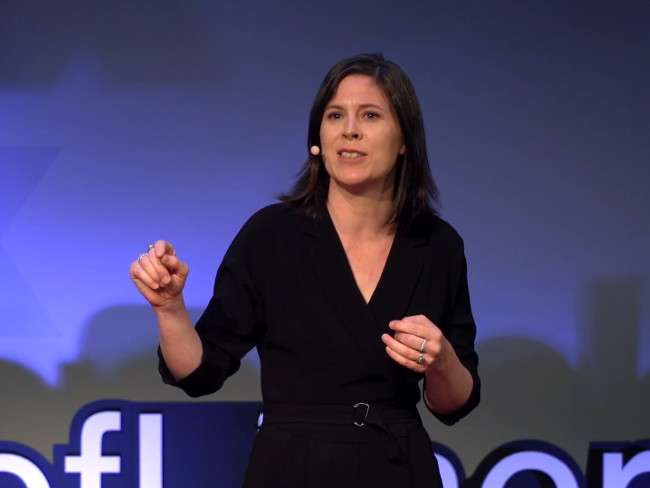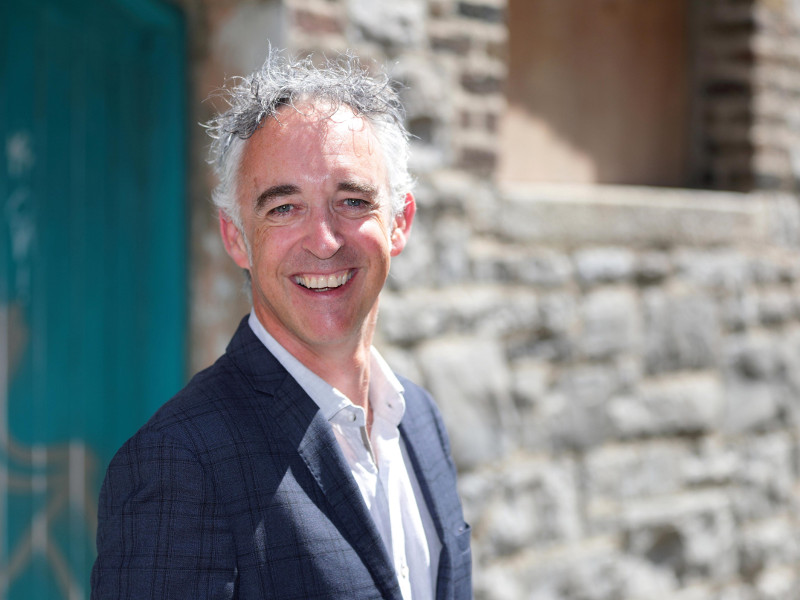Identified last year by Forbes magazine as one of the world’s “top 50 women in tech”, Soapbox Labs CEO Dr Patricia Scanlon is one of a number of Irish women shaping the future of technology and is addressing a global education problem using speech recognition.
As we hurtle towards the second decade of the 21st century, it would be fair to say that all businesses are now digital businesses. Most endeavours, including education, are increasingly digital endeavours. Innovation is the new currency, data is the new oil. And at the epicentre of this revolution are many Irish women leaders, such as Intel’s Ann Kelleher who is masterminding the global production of the silicon chips of tomorrow’s data centres, computers and cars, Nora Khaldi from Nuritas who is using AI to mastermind the future of nutritious food and Patricia Scanlon from Soapbox Labs who is using speech recognition and voice technology to address a global education gap.
Scanlon is both a businesswoman and technologist who has developed a speech recognition platform that uses artificial intelligence (AI) to help children aged four to 12 advance their reading skills in such a way that it could address childhood literacy all over the world.
“What Soapbox envisages is a way to alleviate real pains in the classrooms where teachers don’t have the resources to address every child in the room and by using our technology prevent kids from failing and dropping out of school”
The platform is so compelling that the young Dublin company has signed a global deal with Microsoft to bring its AI-driven speech recognition to Microsoft’s Azure cloud.
As well as being lauded by Forbes last year as one of the top 50 women in tech globally, her company was recently listed with a number of Irish tech companies among Wired magazine’s Europe’s 100 hottest start-ups 2019.
And in recent weeks it emerged that the chief financial officer of Shazam Colm O’Carroll has left Apple to join the Soapbox Labs team.
The voice of tomorrow
Scanlon, a former Bell Labs researcher founded Soapbox Labs in 2013 after nearly 20 years of experience in the area of speech recognition technologies.
The company was founded in reaction to the fact that off-the-shelf speech recognition technologies are designed for adults rather than children’s voices. Using the Soapbox platform software developers can voice-enable all kinds of educational and entertainment experiences in all manner of products using the company’s application programming interfaces (APIs).
Soapbox has raised €4.7m to date, including securing a €1.5m Horizon 2020 grant.
The business came about when Scanlon had an epiphany while observing her young child interacting with an app that was supposed to be teaching her maths.
“I noticed that the product would have been so much more useful if it had the ability to understand whether she had learnt the skill it was trying to teach her. The only way it was going to know if she had learned the skill – she was three – was if it could understand her pronunciation and it was unable to do that. It was 2013 and my first inclination was wow, that’s a gap. At the time e-learning and educational apps were exploding and that was my cue.
“Speech recognition at its core can do a lot of things and people today think of speech recognition in terms of voice assistants like Alexa, Google Home or Siri, which are just applications of speech recognition. Speech recognition, natural language recognition, processing, understanding … there are lots of layers and one of the applications popular today is voice assistant.
“But when we set out to do speech recognition for education, one of the applications I thought about was literacy. We decided that from the get-go that our underlying code can serve literacy, language learning, speech therapy as well as gaming, voice control and voice assistance.”
The essence of what Scanlon is about is she has not only identified a gap in the technology market, she has pretty much orchestrated the entire chain in terms of how to fulfil the needs of a critical, emerging market within that gap. This is a market that extends beyond learning apps and games to things like robots and other products of the future but also addressing a massive educational issue in terms of diagnosing learning problems like dyslexia early enough in the education cycle.
“It was a clear gap in the market, speech recognition for children with a very clear first use case or vertical in literacy and language learning. But equally we built it knowing a kid was going to use their voice to get a character to move around screen, or instruct a robot smart toy. We envisage different demands from the market and we have designed our code base in a certain way to delivery that.
“People sometimes struggle to understand how big the speech recognition/voice tech market is going to be because in the beginning – or pretty much where we are today – it is currently about voice assistants.
“But humanity is evolving beyond pressing buttons or keys to using their voice or gestures to communicate with machines and now machines are practically on a par with humans for speech recognition and accuracy.”
Scanlon previously worked with IBM and Bell Labs where she researched voice recognition and earned a PhD. She believes that what held back speech recognition technology up until now was that the accuracy just wasn’t there.
Apple introduced Siri in 2011 and this was soon followed by Amazon with Alexa and Microsoft with Cortana.
“But when I saw my daughter struggling with an app that was supposed to be teaching her, I realised that everybody was ignoring kids and it was obvious to me. A child’s voice is extremely different from an adult’s, the speech behaviours are different. The younger you go the physical differences and behaviours are bigger. By age three it is hit and miss.”
Scanlon said that the initial pushback she got from investors and potential customers was that companies like Google or IBM would eventually get around to addressing the gap. “But from my experience working in multinationals I knew they wouldn’t do it in the way it needs to be done and they won’t do it quick enough and the focus won’t be there and by the time they realise it I’ll have built the solution that they don’t have, and we’ll have the market lead. And that’s pretty much what has happened.”
Addressing a global learning problem
The business is on a growth curve and as well as partnering with the world’s biggest software company (Microsoft), Soapbox has deployed pilot programmes in schools in the UK and Ireland to prove the efficacy of using speech recognition technology for early literacy for children.
Crucially, the Irish company’s technology will play a role in ensuring children with dyslexia will be discovered and supported earlier in their educational cycle.
“What we have enabled is for kids to be able to do reading practice 10 to 15 minutes a day. We partner with companies that do the pedagogy around how to teach. From the point of view of a teacher with 10 to 20 kids, they don’t have that time every day to individually teach the child, it takes a full school day to spend 10 minutes a day with a child.
“Research has shown that kids will advance literacy rapidly if they have daily, regular practice or as many times a week as possible. It is vital to screen children for dyslexia before they even get into their kindergarten. This has already been mandated by half of the US states to deliver this new form of screening. It takes four times longer to intervene with a child aged eight or nine who is struggling with their reading than it would when they were five. The longer you leave a child struggling with literacy, the more expensive it is for the State and the education system to intervene.”
The scale of the task is enormous, and Scanlon reckons that 10pc of kids in all OECD countries are struggling with reading. “There are 620m kids in the world who can’t read a sentence and two-thirds of them are already in school. What Soapbox envisages is a way to alleviate real pains in the classrooms where teachers don’t have the resources to address every child in the room and by using our technology prevent kids from failing and dropping out of school. It is a cost-effective way of addressing known problems in the system and it isn’t possible unless you have a high-accuracy speech recognition.”
The power of voice for kids everywhere
Control:
https://youtu.be/RoaVMzhjyg8
Converse:
https://youtu.be/Fx2fg4P2KHc
Assess:
https://youtu.be/7Wb-AILALMU
Written by John Kennedy (john.kennedy3@boi.com)
Published: 23 August, 2019







